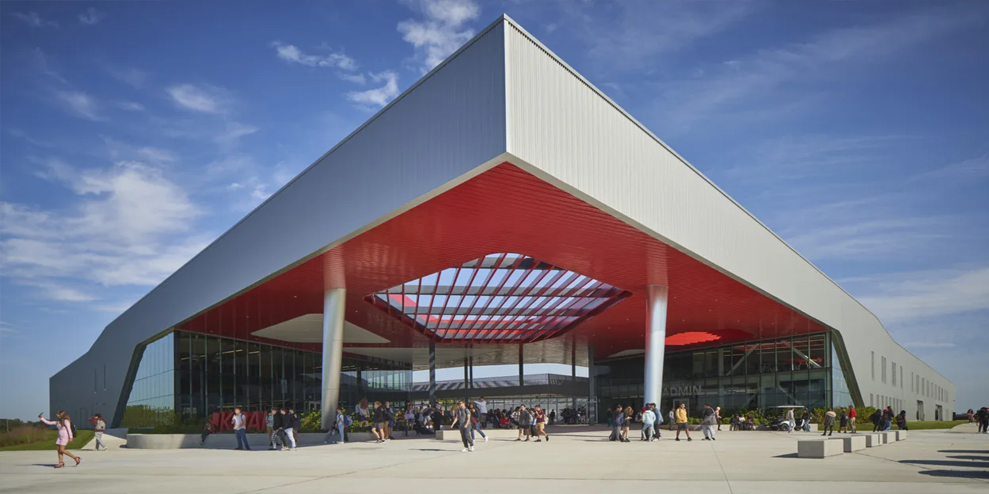Interconnected spaces and class topics are part of creating a new type of high school graduate.
A giant trapezoidal building with a donut hole in the middle rises from the flatlands of a former ranch outside Tampa, Florida. Clad in shiny metal, the building has a futuristic gleam, and an equally futuristic feel inside, with state-of-the-art science labs, robotics studios, and media centers. Squint, and it’s a tech startup’s well-heeled headquarters. But the building is actually a brand-new high school geared around the jobs of the future.
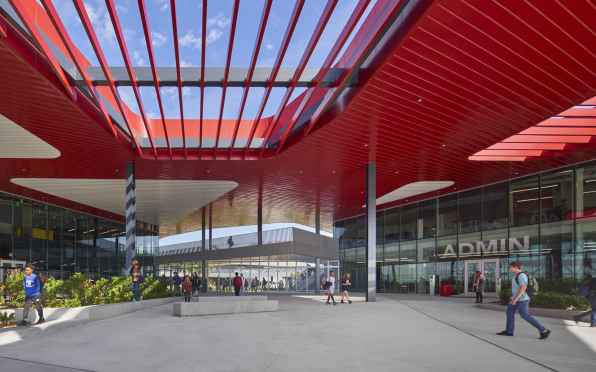
The educational goals of Kirkland Ranch Academy of Innovation (KRAI) in the Tampa suburb of Wesley Chapel are built into its campus. The public high school is focused on career and technical education, an emerging concept in secondary schooling in the U.S. that seeks to use the four years of high school to prepare students for a wide range of educational and workforce futures—from graduate school to jobs with local companies immediately after graduation.

Across the country, schools are reorienting their courses to accommodate the 30% to 40% of high schoolers who don’t plan to attend a four-year university after graduation, bringing in a more diverse set of education and training opportunities that can prepare them to jump directly into the estimated 30 million well-paying jobs that don’t require a bachelor’s degree.
KRAI, now in its first academic year, was specifically designed to teach the hard and soft skills students will need to follow those paths, even into jobs and industries that don’t yet exist.
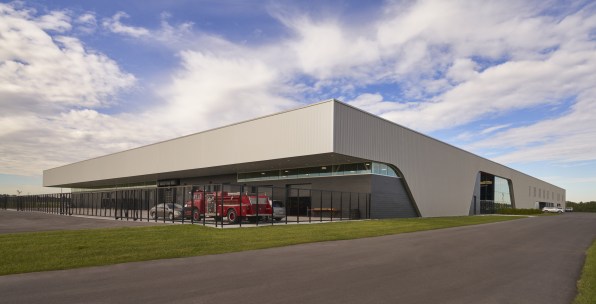
KRAI was designed by CannonDesign and Hepner Architects to create a mix of physical spaces where students can learn trades, collaborate with each other, and learn how to apply technical skills to a variety of real-world problems. The curriculum is built around the current demands of industries in the region, including construction, robotics, and healthcare. The school’s classrooms are designed to give teenagers early access to the tools and processes that make these industries tick.
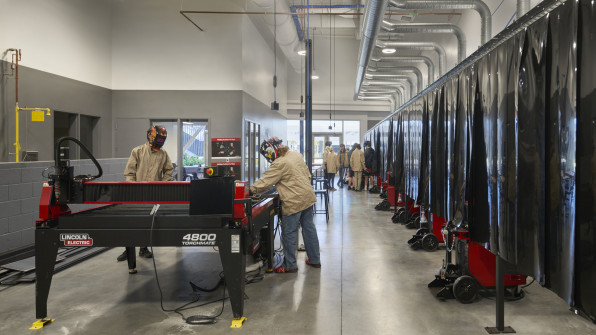
“The [Pasco County school] district came up with a huge vision,” says Michael Kmak, vice president of CannonDesign. “But on top of that, they came with their data. They were an excellent partner in finding all the careers that businesses in the tri-county area were looking for, what students were interested in at the middle school and high school levels, what parents were interested in for students’ careers going forward.”
Going beyond the typical wood-and-metal shops of yesteryear, KRAI’s skill-centric laboratories include an auto garage, areas for engineering, electronics, robotics, welding, cyber security, biomedical science, and patient care. Paul Mills leads CannonDesign’s practice, focused on primary and secondary education, and he says the school’s labs are just part of the picture.
They’re also designed to enable collaboration between students and an intermixing of technical skills. Rather than training a student to work as an electrician, for example, the school aims to show how electrical skills are used in different fields, and how they can combine their electrical skills with someone else’s skills in construction or robotics to solve problems.
“What we’re hearing time and time again is the need for soft skills,” Mills says. “Working interpersonally as teams, as leaders, as people who can be responsive to tasks assigned to them. And when we designed the building, we tried to think in terms of how we can reinforce those soft skills.”
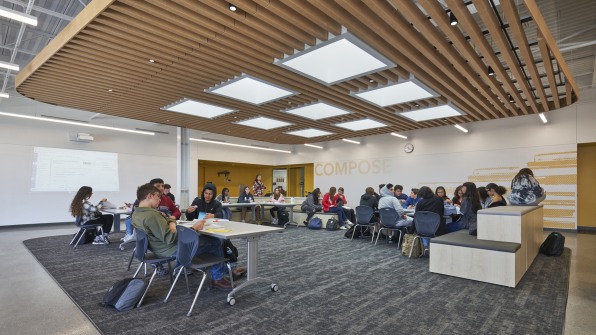
Collaboration is key to both the curriculum and the design. “Our classrooms are set up so that there’s no front of the classroom. Every desk is easily movable because we want that constant change in how teachers are teaching,” says Dee Dee Johnson, the school’s principal. “We know that we need our students to be able to collaborate in order to be innovative, so they’re not just sitting there working by themselves. They are constantly in different groupings and pairings.”
The students are also taking subject matter from one class to another, designing a bridge in engineering class, learning about the geometry behind the design in math class, exploring the history of ancient bridges in social studies, and then writing a paper on it all in English. Some of this cross-class integration is even physical. Rollable garage doors separate the lab spaces for building construction and electricity, and Johnson says those doors can open up to combine lessons.

The school’s donut-hole design creates a large central courtyard where outdoor learning can take place. It’s an area that’s used for lunch and social purposes as well as indoor-outdoor learning. And because high school is not only about career preparation, it’s also used for school dances.
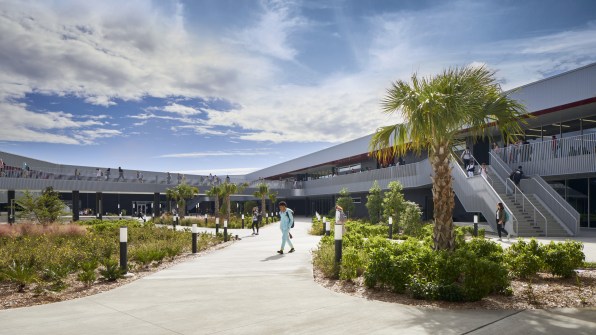
Flows across the courtyard, across classrooms, and even within laboratory spaces are all part of grounding students in the concept that they’re part of a network of overlapping skills, not just individual students preparing for jobs that exist in silos.
“It is the interconnectivity of the way the school was designed that facilitates that process of developing not just the technical skills that students would have but also those soft skills,” says Kim Moore, assistant superintendent for career and innovative programs at the Pasco County School District. “The beauty of the school is it provides students with those opportunities.”
—
This article first appeared in www.fastcompany.com
Seeking to build and grow your brand using the force of consumer insight, strategic foresight, creative disruption and technology prowess? Talk to us at +971 50 6254340 or engage@groupisd.com or visit www.groupisd.com/story

